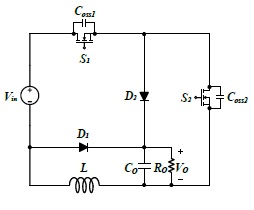- ALL COMPUTER, ELECTRONICS AND MECHANICAL COURSES AVAILABLE…. PROJECT GUIDANCE SINCE 2004. FOR FURTHER DETAILS CALL 9443117328


Projects > ELECTRICAL > 2017 > IEEE > POWER ELECTRONICS
This paper presents a new buck-boost converter. Unlike the single-switch buck-boost (SSBB) converter, the proposed converter has low voltage stresses on semiconductors. Moreover, although both the conventional two-switch buck-boost (TSBB) and the proposed converters have the same number of passive and active components, and the proposed converter can reduce the conduction loss as a result of having fewer conducting components. Therefore, the proposed converter obtained a higher efficiency than the TSBB converter.
Modulation Scheme.
In this paper, a new buck-boost DC-DC converter is proposed. The proposed converter has advantages of lower voltage stresses on the semiconductor than the SSBB converter and fewer conducting components than the TSBB converter. In order to overcome the problems of the conventional converters, a new buck-boost DC-DC converter is proposed. The proposed converter is composed of a single inductor and two switches and diodes, the same as the TSBB converter. Moreover, the proposed converter can operate in three different modes, the buck, boost, and buck-boost modes, and it can control the switches independently. Moreover, the voltage stresses on the semiconductors of the proposed converter can be lower than that of the SSBB converter. In addition, the proposed converter can reduce the conducting components more than the TSBB converter in the buck and buck-boost modes. As a result, the proposed converter has a higher efficiency than the TSBB converter. Moreover, by operating in the buck or boost mode, the efficiency of the proposed converter is higher than that of the SSBB converter.
Configuration of the proposed buck-boost converter
